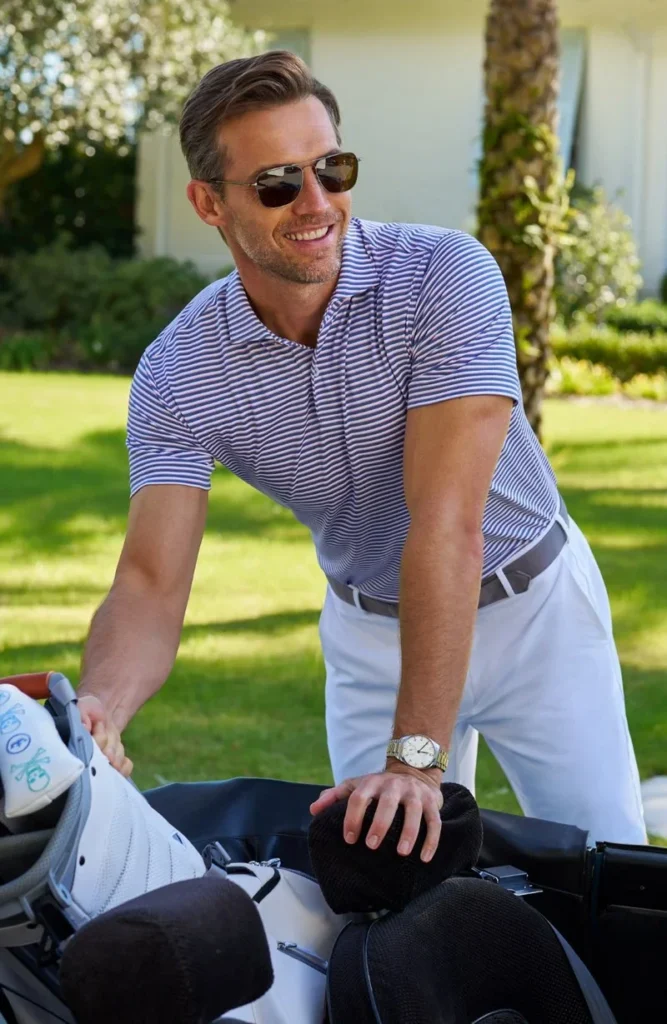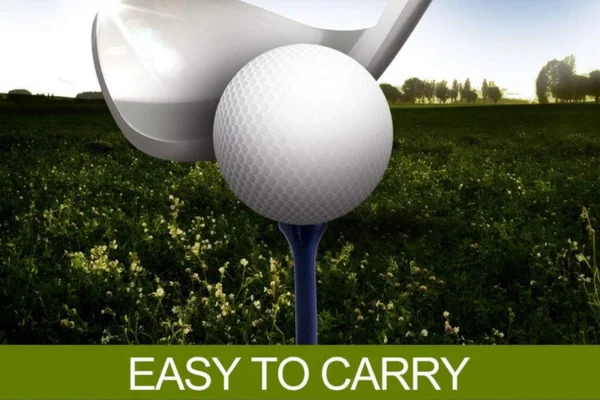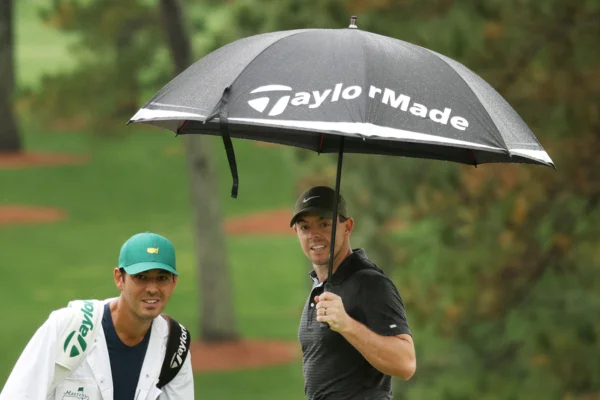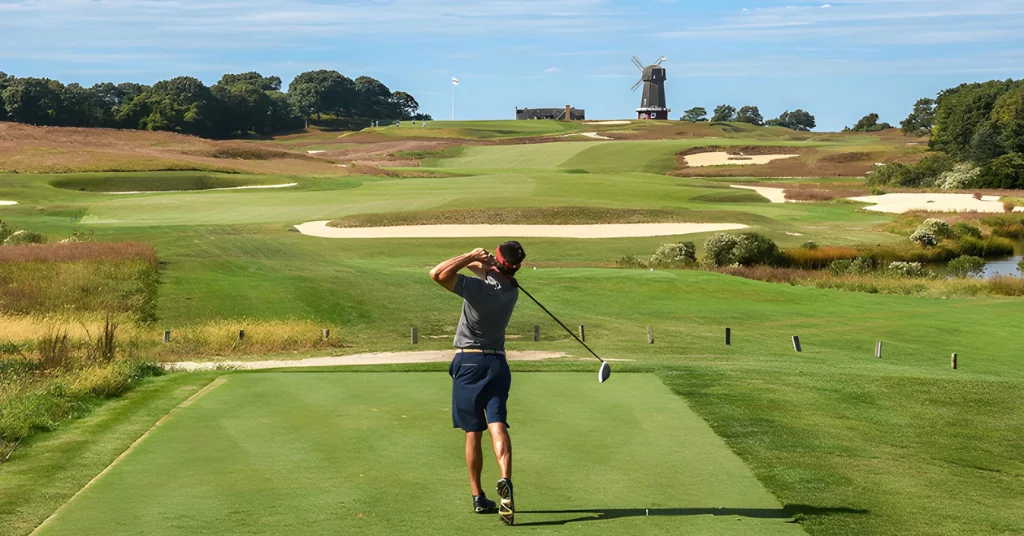The Basic Golf Equipment Every Beginner Must Have: A Comprehensive Guide

Golf is a timeless sport, steeped in tradition and culture, and it continues to attract millions of enthusiasts every year.
Whether it’s for the love of the game, the joy of being outdoors, or the challenge of improving one’s skills, more people are getting into golf than ever before.
In America alone, an impressive 25 million people engage in golf each year, representing a significant portion of the population.
With its ability to combine relaxation, social interaction, and physical exercise, it’s no wonder golf remains so popular.
For beginners, however, stepping onto the green for the first time can be both exciting and daunting.
Golf isn’t just about swinging clubs and hitting balls; it’s a game that requires specific equipment, and understanding what gear is essential is the first step toward mastering the game.
This comprehensive guide will walk you through the basic golf equipment every beginner must have.
Whether you’re a casual player looking to get started or someone eager to dive deep into the sport, this guide covers everything you need to know about the essential gear required to play golf.
1. Golf Clothing: Dress for Success
Golf has a reputation for being a refined and polished sport, and part of that tradition includes adhering to specific dress codes.
Proper golf clothing is more than just looking the part; it also serves practical purposes that can enhance your performance on the course.

Many golf courses, especially private ones, have dress codes that dictate what players can and cannot wear. While public courses may be more relaxed, it’s always a good idea to dress appropriately.
A. Golf Shoes
One of the most important pieces of golf apparel is your footwear. Golf requires a great deal of walking and standing, and the wrong shoes can quickly lead to discomfort, fatigue, or even injury.
Golf Shoes are specifically designed to provide the stability and traction needed for the game. Look for shoes that are:
- Waterproof: Wet conditions can make the course slippery, and waterproof shoes will help keep your feet dry.
- With Soft Spikes: Soft spikes provide a solid grip on the ground without damaging the turf. Avoid steel spikes, as these are usually reserved for professionals and are often prohibited at most golf courses.
Proper Golf Shoes will provide a firmer foundation during your swing, helping to prevent slips and missteps.
Also Read This Article: Best Golf Shoes 2024
B. Golf Gloves
While not absolutely essential, a Golf Glove is highly recommended, especially for beginners. Typically, players wear a glove on their lead hand (left hand for right-handed players and right hand for left-handed players).
A Golf Glove helps improve your grip on the club, preventing it from slipping due to sweat or moisture.
It also reduces friction between your hand and the club, preventing blisters and discomfort.
Though it’s optional, many golfers find it to be a game-changer in terms of grip and control.

Also Read This Article: Importance of Golf Gloves
C. Golf Shirts
Golf courses typically require players to wear collared shirts, either short-sleeved or long-sleeved. Polo shirts are a popular choice as they offer both comfort and style.
Always avoid t-shirts, as they’re not considered appropriate for the course.
D. Pants or Shorts
When it comes to bottoms, golfers have several options, but certain rules should be followed:
- No drawstring shorts or soccer shorts. Opt for tailored shorts or pants with belt loops.
- Avoid white pants, as these are usually associated with lower-handicap golfers.
- Three-quarter length shorts should be avoided as they tend to be associated with beginners and might not be allowed on some courses.
For women, skirts and skorts are common choices, but they should be appropriate for the course.
Denim is a big no-go for both men and women, as it’s considered too casual.
E. Colors
It’s generally a good idea to avoid bright, flashy colors and instead choose neutral tones like beige, tan, khaki, gray, or cream.
These colors are more aligned with the traditional look of the game and will ensure that you’re dressed appropriately for any course you play on.
Before heading out, it’s always smart to check with the course regarding its specific dress code.
You’ll not only avoid embarrassment but also demonstrate respect for the traditions and rules of the game.
2. Golf Clubs: The Tools of the Trade
After ensuring you’re dressed for success, the next step is selecting the right golf clubs.
Golf clubs are, of course, the most critical equipment in the game, and there’s a wide variety to choose from.
For beginners, building a full set of clubs can be overwhelming, but you don’t need every club to get started. In fact, many experienced golfers recommend beginners start with a smaller selection.
A. The Essentials
By rule, professional golfers can carry up to 14 clubs in their bag, but for beginners, a more manageable set of clubs is sufficient.
Here are the must-haves for anyone new to the game:
- Driver: This club is typically the longest in the bag and is used to hit the ball off the tee for long-distance shots. The driver is a member of the “woods” category and is also referred to as the 1-wood. It has the largest head of any club, allowing for maximum distance off the tee.
- Putter: The putter is an essential club that no golfer would be without. It’s used to make short, low-speed strokes with the goal of rolling the ball into the hole from a short distance. Putters come in various styles, so find one that feels comfortable in your hands and helps you with precision.
- Sand Wedge: Sand wedges are critical for getting out of bunkers and sand traps. They feature a wider sole, which helps slide under the ball and lift it out of the sand. As the name suggests, it’s a must-have club for any beginner learning the game.
- 6-Iron: This versatile club can help you hit the ball around 150 yards. It’s not the easiest club to hit but is a great tool for beginners to develop their swing.
- 8-Iron: Known as a “short iron,” the 8-iron is excellent for shots requiring high loft and moderate distance. It’s shorter in length than long irons, making it more forgiving for newer players.
- Pitching Wedge: This club is usually the most lofted iron in a standard set and is typically used for short approach shots or shots around the green. It’s perfect for situations where you need a high, soft landing on the green.
- Fairway Wood: Used for long shots from the fairway (the short grass leading up to the green), fairway woods are easier to hit than drivers and are great for covering long distances.
B. Investment and Budget
For beginners, golf clubs don’t need to break the bank. You can find reasonably priced clubs, especially if you’re willing to buy used.
A titanium driver can be found for as little as $75, and putters can be even less expensive.
A full set of beginner clubs typically costs between $250 and $350, a fair investment that will last through the initial stages of learning the game.
3. Golf Balls: More Than Meets the Eye
A crucial yet often underestimated piece of equipment in golf is the Golf Ball. While to the untrained eye, golf balls may all appear the same, there’s actually a lot of science behind their design.
Different types of Golf Balls serve different purposes, and for beginners, choosing the right ball can make a big difference in performance.
A. Types of Golf Balls
Golf balls are typically classified by how many layers they have, ranging from one-piece to five-piece constructions.
The more layers a ball has, the more sophisticated its design and performance capabilities. Let’s take a look at the different types:
- One-Piece Balls: Rarely used outside of mini-golf or novelty events, one-piece balls are the simplest and least expensive. They are made from a single material and are known for their durability rather than performance.
- Two-Piece Balls: Ideal for beginners, two-piece balls feature a solid rubber core covered with a tough outer shell, usually made of surlyn or urethane. These balls are designed to maximize distance while providing a level of control. Their durability makes them perfect for newcomers who may lose balls frequently.
- Three-Piece Balls: These balls are more commonly used by professional players and experienced amateurs. With a solid core, a layer of elastic windings, and a softer outer shell, three-piece balls offer more control and spin but require a more skilled touch to maximize their benefits.
- Four-Piece and Five-Piece Balls: These balls are the most advanced and offer maximum spin control and feel, particularly around the greens. They are designed for highly skilled players and professionals who can take advantage of the various layers to improve performance.
B. Choosing the Right Ball for Beginners
As a beginner, a two-piece golf ball is your best bet. These balls provide the distance you need while being durable enough to withstand the inevitable wear and tear of frequent use.
They’re also less expensive than multi-layer balls, which means you won’t feel as bad when you lose one.
If you’re going through balls at an alarming rate, consider buying used or refurbished balls.
Many golf courses and online retailers sell used balls that have been recovered from water hazards or other areas.
These balls are perfectly playable and often come at a fraction of the cost of new balls.

Also Read This Article: Best Golf Balls for Beginners 2024
4. Golf Bags: Stay Organized and Prepared
Once you’ve selected your clubs and balls, you’ll need a Golf Bag to carry them in.
Golf bags come in various sizes and styles, but for beginners, it’s important to choose one that is both functional and easy to carry.
A. Types of Golf Bags
There are two main types of golf bags to consider:
- Carry Bags: These lightweight bags are designed for players who prefer to walk the course. They come with straps for easy carrying and are often equipped with a stand that keeps the bag upright when you set it down.
- Cart Bags: These are larger, heavier bags designed to be used with a Golf Cart. They offer more storage space but can be cumbersome if you’re planning to walk the course.
B. Features to Look For
When choosing a golf bag, consider the following features:
- Dividers: Bags with multiple dividers help keep your clubs organized and prevent them from clanking together.
- Pockets: Look for bags with plenty of pockets for storing golf balls, tees, gloves, and other accessories.
- Comfort: If you’re planning to walk the course, choose a bag with comfortable, padded shoulder straps.

Also Read This Article: Best Golf Stand Bags 2024
5. Golf Tees: Small but Essential
Golf tees are small, simple, and easy to overlook, but they play an important role in the game. Tees are used to elevate the ball off the ground, making it easier to hit with your driver or fairway wood.

Most tees are made from either wood or plastic, and they come in various lengths to suit different club types and shot preferences.
A. Choosing the Right Tees
For beginners, standard wooden tees or plastic tees work perfectly fine.
Wooden tees are biodegradable and environmentally friendly, while plastic tees tend to be more durable and less likely to break.
Some tees are designed to reduce friction between the ball and the tee, which can help increase distance, but these are typically more expensive and not necessary for beginners.
6. Golf Towel: Keep Your Gear Clean
A Golf Towel is another small but essential piece of equipment. Keeping your clubs and golf balls clean is important for maintaining their performance, and a towel will help you do just that.
A wet ball or a club face covered in dirt can affect your shot accuracy and distance, so having a towel handy is crucial.
A. Choosing the Right Towel
Golf towels come in various materials, but a simple microfiber towel will do the job well. It’s soft enough to avoid scratching your clubs and absorbs water effectively.
Many golfers attach their towel to their bag using a clip for easy access during the round.
7. Golf Rangefinder: Take the Guesswork Out of Distance
While not absolutely necessary for beginners, a golf Rangefinder can be a valuable tool for improving your game.
Rangefinders use lasers or GPS technology to measure the distance between you and the hole, helping you choose the right club for your shot.
For beginners who are just learning the game, having accurate distance information can make a big difference in shot selection and overall performance.
A. Types of Rangefinders
There are two main types of Rangefinders:
- Laser Rangefinders: These devices use lasers to calculate the distance between you and a target, such as the flagstick. They are highly accurate but can be tricky to use for beginners who are still developing their aim.
- GPS Rangefinders: These devices use satellite technology to provide distance information for the entire course. They are easier to use than laser rangefinders but may not be as precise.
8. Golf Umbrella: Be Prepared for Any Weather
Golf is played outdoors, which means you’re at the mercy of the elements.
Having a golf umbrella in your bag is a smart idea, especially if you’re playing in an area where the weather can be unpredictable.

A large, sturdy umbrella will keep you and your gear dry during unexpected rain showers and can also provide shade on hot, sunny days.
9. Golf Course Selection: Where to Play
Now that you’re equipped with all the essential gear, the next step is finding the right Golf Course to practice your skills.
For beginners, not all courses are created equal, and some can be quite challenging.
A. What to Look for in a Beginner-Friendly Course
When selecting a golf course, consider the following factors:
- Tee Options: Look for courses that offer multiple sets of tees, including forward tees that are shorter and more forgiving for beginners.
- Course Length: As a beginner, aim for a course that is between 4,500 and 5,500 yards. Anything longer can be too challenging.
- Slope Rating: A course with a slope rating under 70.0/120 is ideal for beginners. The slope rating measures the difficulty of a course, with lower numbers indicating an easier layout.
- Course Layout: Check the course map to see how wide the fairways are and how many hazards (bunkers, water, etc.) are present. Wider fairways and fewer hazards make the course more beginner-friendly.
- Short Courses: Executive courses or par-3 courses are perfect for beginners. These courses are shorter and allow you to play more holes in less time. They’re also usually more affordable.

B. Cost Considerations
As a beginner, it’s not necessary to spend a lot of money on high-end golf courses. Start with more affordable public courses that offer beginner-friendly layouts.
As your skills improve, you can gradually work your way up to more challenging and expensive courses.
10. Practice, Patience, and Enjoyment: The Final Ingredient
Golf is a game that requires time and patience to master. No amount of equipment can replace the importance of practice and dedication.
As a beginner, focus on improving your skills one step at a time. Visit a driving range, take lessons if possible, and enjoy the process of learning and growing in the game.
Above all, remember that golf is meant to be fun. Don’t get discouraged if you don’t see immediate improvement.
With the right equipment, the right mindset, and a willingness to learn, you’ll find that golf can be a rewarding and enjoyable pastime for years to come.
Conclusion: The Basic Golf Equipment
Golf may seem like a complicated sport with a steep learning curve, but with the right equipment and a bit of practice, any beginner can get started on the path to becoming a skilled player.
From golf clothing that ensures comfort and style, to the essential clubs that help you navigate the course, to the often-overlooked items like Golf Towels and rangefinders, every piece of equipment plays a role in your success on the course.
Remember, you don’t need to buy everything at once or spend a fortune to enjoy the game.
Start with the basics, and as your skills improve, you can gradually add to your collection.
Golf is a journey, and every round offers an opportunity to learn and grow.
So gear up, hit the green, and most importantly—enjoy the game!
